Cheshire contractor’s five custom seed drills for SFI sowing
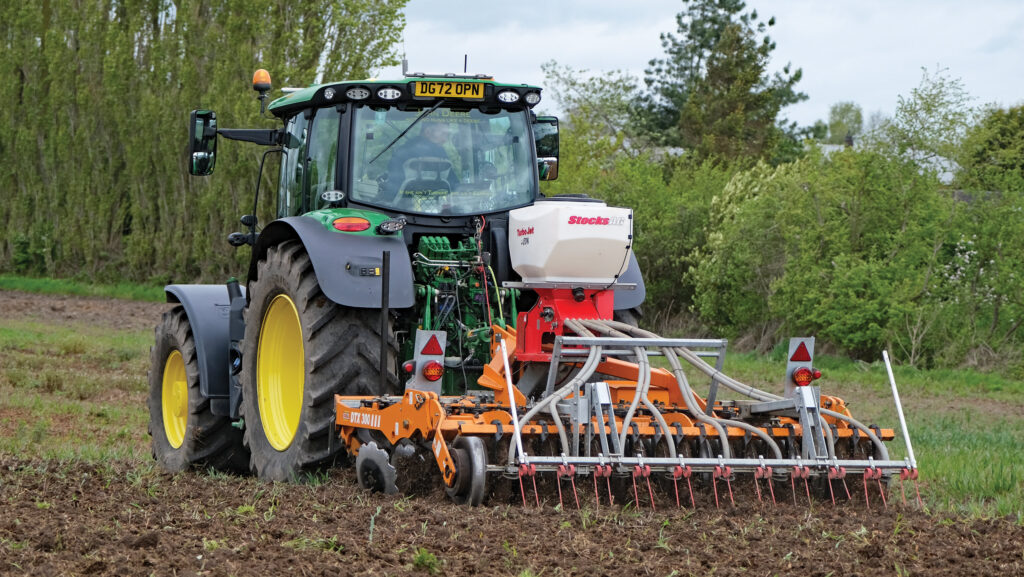 © James Andrews
© James Andrews Variable seed sizes, different sowing depths and the need for cost-effective establishment make environmental mixes tricky to get right.
But thanks to their five modified seed drills, each of which is tailored to different crops and conditions, Cheshire contractors Ross and Tom Yarwood have got most eventualities covered.
See also: 12 power-harrow combi drill options with 3m working width
Although Sustainable Farming Incentive has only come to the fore this year, crop establishment has long been one of the father-and-son team’s fortes.
So, by adding one extra machine and making some subtle tweaks to others, they now have options for most combinations of seeds, land type and budget.
It might seem extravagant to have this many seeding options in the arsenal, but costs have been kept in check by running tidy older kit that’s fastidiously maintained.
3m Simba DTX with Stocks Turbo Jet seeder
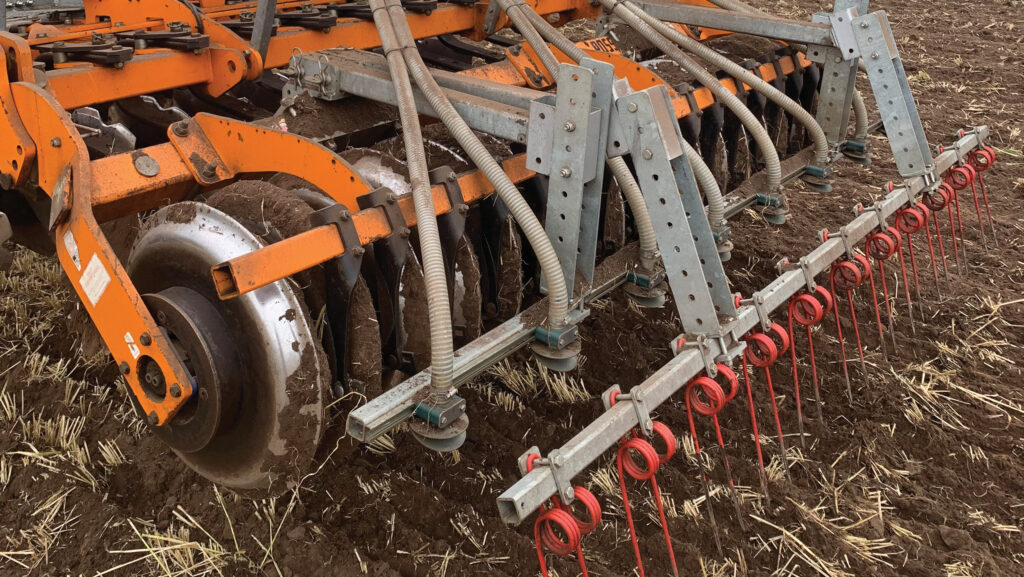
© James Andrews
A particularly versatile tool is a mid-2000s Simba DTX fitted with a Stocks Turbo Jet pneumatic small seeds applicator.
Originally, this was put together as a one-pass tool for establishing kale, stubble turnips and mustard. But it works well for any concoctions of small seeds, including clover-based legume fallows, grass margins, and pollen and nectar mixes.
Seeders such as the Turbo Jet are often teamed with a set of discs for these tasks, but the addition of the DTX front legs gives more consistent results, says Ross.
“We usually work at an angle to the tramlines and find that the legs level the ground, remove compaction and give better establishment.”
The machine’s adjustable disc angle is also a useful feature, he adds. “They’re great as we can vary the amount of soil we move depending on the conditions and how fast we’re able to work.”
On average, forward speed is about 11-12kph, which means they can cover the ground relatively quickly.
The only downside is that the tool makes their 210hp Steinbauer-chipped John Deere 6155R quaff large quantities of diesel.
The Yarwoods married the cultivator and seeder unit together themselves, with a little help from local engineer Andrew Gate of G8 Fabrication.
This involved building a central frame to hold the seeder, support bars for the eight pipes and their spreader plates behind the DD packer, and a home-made rear following harrow.
Typically, they like their drills simple and use land metering wheels, but to keep the setup neat the Turbo Jet seeder works off a radar speed sensor.
“I wasn’t sure how accurate or reliable it would be, but it’s turned out to be brilliant,” says Ross.
“At about £5,000 I initially thought the Turbo Jet was pricey for what it was, but when you start using it you realise that it’s a surprisingly sophisticated piece of kit.”
For added convenience when swapping between seed types they’ve recently invested in a second metering cartridge, so one can run large flutes and the other small.
Finishing touches to the drill included a step, a weld-mesh platform for safer filling, and a set of work lights. The metalwork was also galvanised to make it last.
6m Kuhn Megant tine drill with seed spreader plates
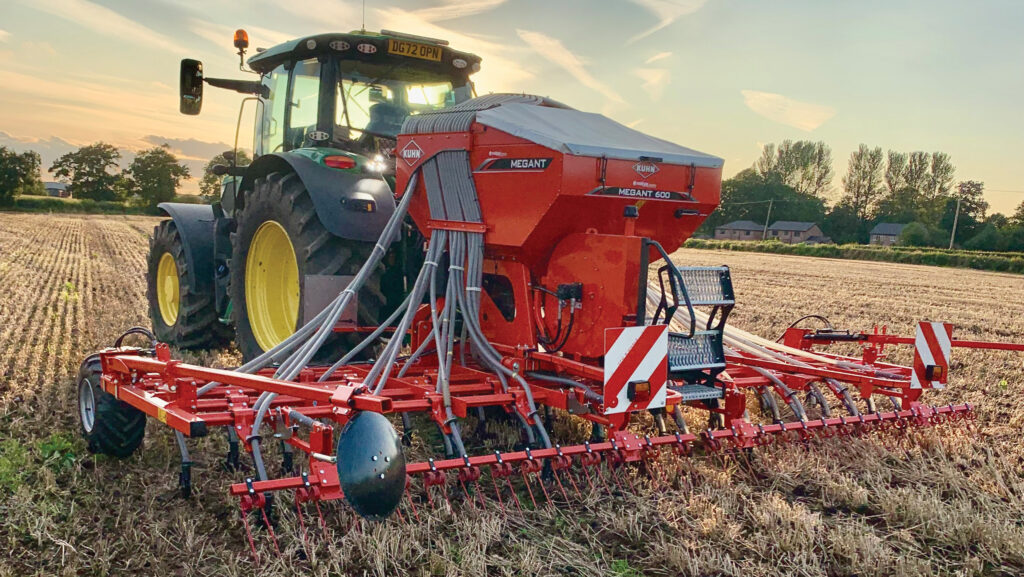
© James Andrews
The most recent drill to join the Yarwoods’ line-up is a 6m mounted Kuhn Megant tine seeder.
In its original configuration, this is best suited to sowing cereals. But by raising the height of the seed tubes to the top of the tines and adding spreader plates, they’ve created a speedy one-pass machine for establishing cover crops and SFI mixes into stubbles.
With this setup, seed is scattered evenly over the surface, rather than being drilled in lines.
And when working at speeds of around 12kph it throws just enough soil around to cover the seed.
They also added a home-made single-row following harrow in place of the original double-row unit to finish the job off without disturbing the seed too much.
Another benefit of this drill is the large 1,800-litre hopper, which makes it suitable for sowing higher-volume mixes, such as the AHL2 wild bird seed.
When using blends like this which contain both small and large seeds, they put low volumes in the hopper at a time to reduce the risk of smaller seeds shaking to the bottom.
For those who would rather sow small seeds separately, these drills have the option of an additional 110-litre hopper dedicated to the task.
Working speed is similar to the Simba at 12kph, but the width of the machine and the low power requirement means it’s a considerably quicker and cheaper option for customers.
32-row Moore Unidrill
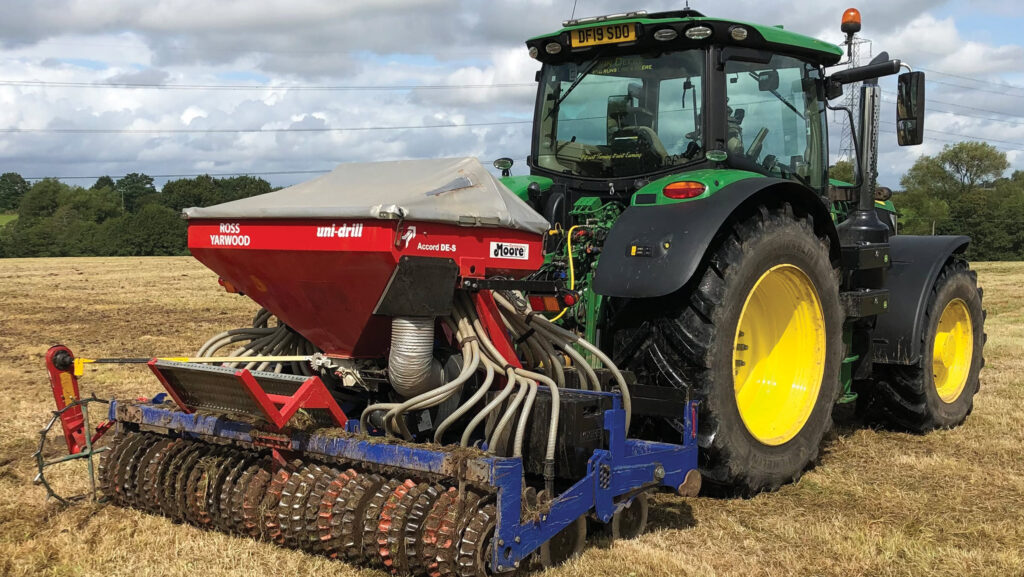
© James Andrews
Originally purchased for direct seeding grass and clover into an existing ley, the Yarwoods’ 3m Moore Unidrill is earmarked for establishing a significant area of GS4 herbal leys.
It should be well suited to this task, with the heavy discs capable of slicing into tough turf so that good seed-to-soil contact is achieved.
Their machine is the less common 32-row model, which means they can achieve decent cover in a single pass, unlike 24-row models that can require two runs over the field.
“I’m not a fan of the two-pass technique as the turf can start to pick up the second time over and make a mess,” says Ross.
“Seed distribution isn’t as good either, it takes longer and it uses more fuel,” he adds.
The only downside of the closer spacing is that there’s a greater risk of it blocking with debris, although this is less of a problem when the discs are relatively new.
The Yarwoods’ machine was purchased second-hand in tidy condition, but it had seen some work.
This meant most of the wearing parts needed to be replaced, including a set of discs, bearings, coulters and rings for the Guttler rear packer.
Most of the time, the rig is fitted with twenty 30kg weights to help push the discs into the ground and put enough pressure on the Guttler packer to close the slots.
This is usually ample, but for hard-baked ground they’ve invested in a second set of weights that doubles the ballast to a total of 1.2t.
3m Accord DA with raised coulters
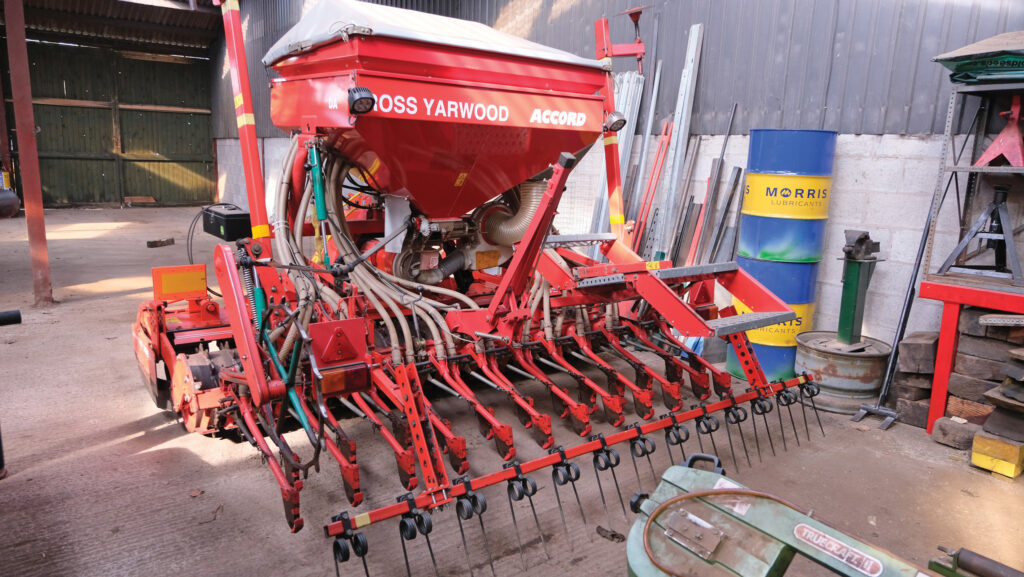
© James Andrews
Another tool for sowing small seeds is an old Accord DA power harrow combination drill, which has been modified to broadcast seed rather than sow it in lines.
This has been achieved simply by raising the height of the Suffolk coulters so that they hover about 20cm above the ground.
This height allows the seed to dissipate as it falls and giving an even distribution across the field.
“Originally, we planned to remove the coulters and fit small spreader plates, but they work really well as they are,” says Ross.
Added to that, they can easily revert the coulters to their original position so it can act as a backup cereal drill.
With the power harrow in play, the outfit creates a fine seedbed, making it a useful tool on heavier soils.
Seed is covered using the rear following harrow, which has been modified so that it still works the ground when the coulters are in their raised position.
3m Kverneland S-drill
The final drill in their line-up is a 3m Kverneland S Drill Pro power harrow combination, which is mainly used for planting cereals.
This is unmodified and runs CX discs with integrated press wheels.
These work well enough, but wearing parts are expensive and the rear press wheels can bung up with soil in the wet. For this reason, they sometimes run with the press wheels removed.
To complement the drills, the Yarwoods have an equally impressive array of cultivation kit.
This includes two Kuhn Multi-master ploughs, a second Simba DTX, a Simba Top Tilth, a couple of Spaldings Flat Lift subsoilers, a 4m Kuhn power harrow, and various front-mounted implements – ring presses, a home-made Triple K-style cultivator for prepping grass seedbeds and a chisel plough for ripping up stubbles.
In addition to their ground preparation and drilling work, the Yarwoods carry our rear-discharge muckspreading, slurry tanking, hedgecutting and trailer work.

